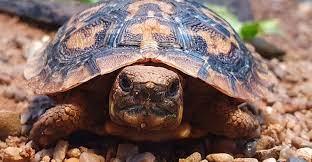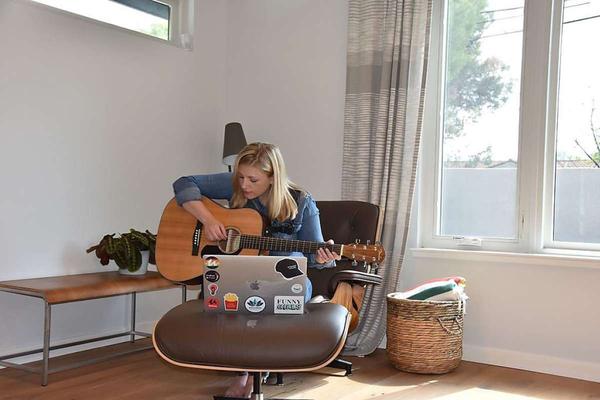Kenya: The commercial farm keeping Pancake tortoises to help prevent extinction
Pancake tortoises (Malacochersus tornieri), are a little-known species currently listed as Critically Endangered (CR) by the International Union for Conservation of Nature (IUCN).
Unlike most tortoises that have heavy and solid shells, the pancake tortoise's shell is soft, flexible and lightweight.
But the pancake tortoise faces many threats to its existence of loss of habitat due to rock destruction, deforestation, cultivation and illegal international pet trade.
"Some countries in Europe and US use the pancake tortoise as pets and they smuggle them. We have farms that farm for pancake but some individuals get them from the wild to the international market so illegal trade is one of those major challenges that is facing their conservation and also habitat loss because of a lot of growing human population there habitat loss and that also affects their conservation," says Patrick Omondi, the chief executive of Kenya Wildlife Training and Research Institute.
It is illegal to sell pancake tortoises under CITES (Convention on International Trade in Endangered Species of Wild Fauna and Flora) rules.
That means that countries that are part of an international agreement on trade in endangered species must ban the trade in pancake tortoises.

However some farmers still have pancake tortoises since before this restriction was introduced in 2019. Though they no longer sell them.
"The private farms are allowed to have an offtake because then they help us reduce the pressure on the wild population and also they have their livelihood instead of doing agriculture they see wildlife to have value. So we promote them if they are licensed," says Omondi.
The pancake tortoise is quite slow to mature, between 5 and 9 years and can only lay one or two eggs annually, hence why its production rate is very slow.
And their eggs take four to six months to hatch.
The pancake tortoises can grow to about 7 inches (18 centimetres).
They mainly inhabit rock crevices in dry areas and are excellent climbers.
And instead of retreating into their shells to hide, the pancake tortoise prefers to run, albeit not very quickly.
In Kenya, private farms have joined the efforts to conserve the pancake tortoise by providing protected habitats with the guidance of Kenya Wildlife Service.
At a remote tortoise farm situated 320 kilometres from Nairobi is 72-year-old Peter Maundu's private tortoise farm.
The retired veterinary officer decided to engage in tortoise farming in 2003, and now earns a living by selling the leopard tortoise for $20.
He used to sell the pancake tortoises at $40 before its trade was forbidden.
The flat anatomy of the pancake tortoise enables it to fit into its preferred habitat: rock crevices.
Peter Maundu, commercial tortoise farmer, explains the differences between the leopard tortoise and the pancake.
"That is an adult leopard tortoise and this is an adult pancake tortoise. The adult pancake tortoise is smaller and has a flat shell as well as underbelly. It has a soft body. This is a juvenile pancake tortoise. When it exceeds 8 centimetres in length, it is considered an adult. The authorities did not allow the sale of pancake tortoises that were bigger than 8 centimetres".
In spite of the commercial nature of his farm, Mandu believes that his business plays a role in the conservation of the pancake tortoise since he can no longer sell them.
"As the years go by, these animals will still be in existence on this farm. This farm will be a place where people who have never seen the pancake tortoise before will come to see them," says Maundu.
Jacob Mwiti, a research scientist at the National Museums of Kenya explains why the species is valuable.
"It is not found anywhere else in the world apart from Kenya, Tanzania and Zambia so for purposes of exhibiting these in zoos, if you find this species in an European zoo it must be coming from this region not anywhere else and that is why it is marketable," says Mwiti.
Because of their walking pace, they often get killed as they can't expect fast moving threats like fire.
"All tortoises are slow-moving. This one as well lives in the same habitat for a long period of time so when people are doing shifting cultivation in their natural habitats light fire, this is one of the species that has been affected by fires," says Mwiti.









